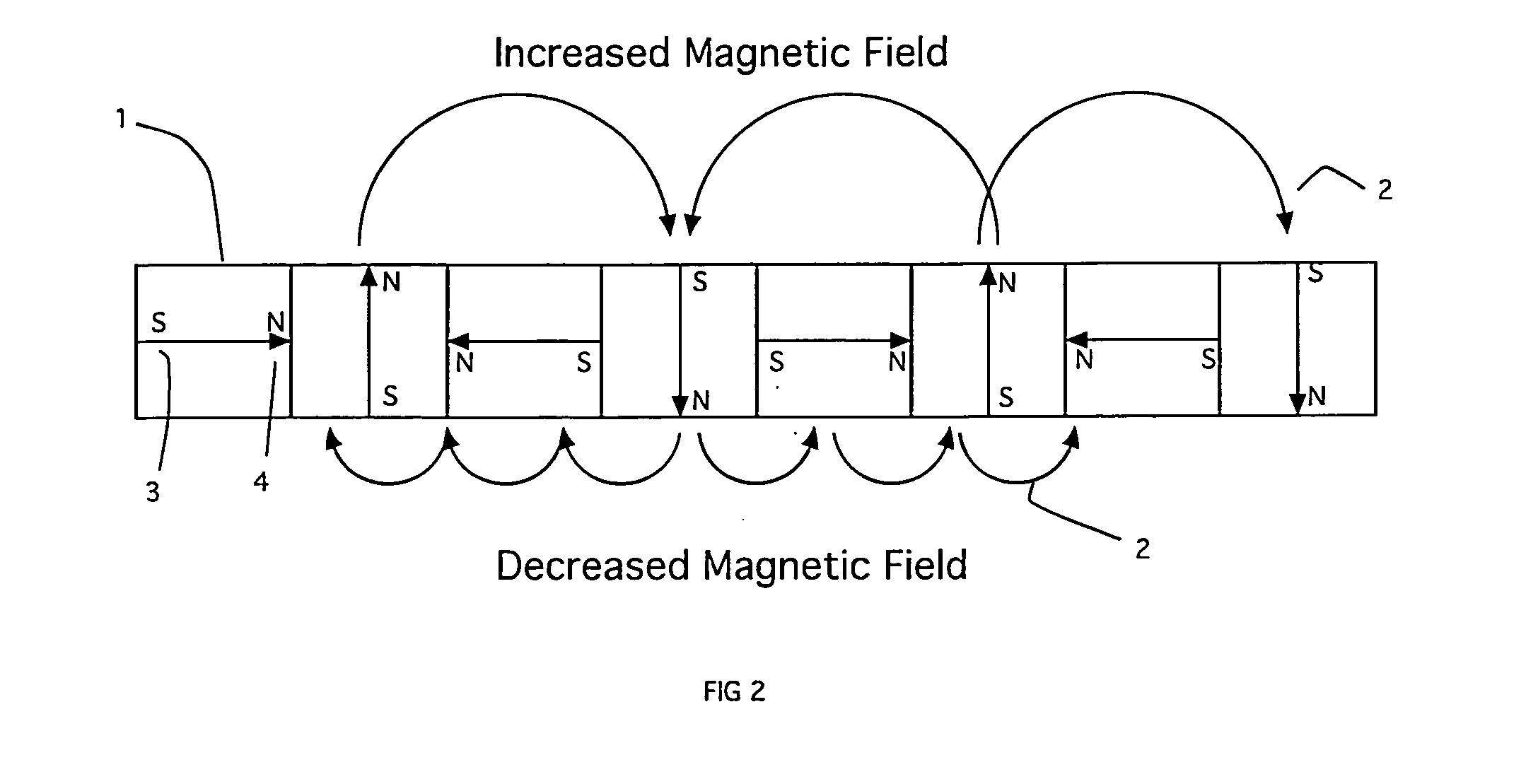Prosthetic Joints
a technology for prosthetic joints and joints, applied in the field of prosthetic joints, can solve the problems of high health care costs for joint replacements, complex design and bioengineering problems of prosthetic joints, and chemical corrosion of the environment, so as to improve the performance and longevity of prosthetic joints, and mitigate the process of wear and failur
- Summary
- Abstract
- Description
- Claims
- Application Information
AI Technical Summary
Benefits of technology
Problems solved by technology
Method used
Image
Examples
Embodiment Construction
[0026]This invention is directed towards redistributing static and dynamic mechanical forces resolved on prosthetic joints by novel means.
[0027]Description of the invention: In a prosthetic joint, multiple permanent magnets are disposed so as to redistribute mechanical loads imposed on the joint with the result that a portion of the applied load that would normally appear, or be resolved at, the joint's opposed moving surfaces is carried by the magnets, thereby reducing the force carried by the interface.
[0028]Referring to FIG. 2, a linear array of permanent magnets (1) is depicted in one configuration (the Halbach configuration) that is known to concentrate magnetic flux on one side of the array while diminishing magnetic flux on the opposite side, as shown by the magnetic field line (3) illustration. South (3) and north (4) magnetic poles are arranged as shown to achieve the flux concentration, or flux directive properties exhibited by Halbach arrays. To the extent that external m...
PUM
 Login to View More
Login to View More Abstract
Description
Claims
Application Information
 Login to View More
Login to View More - R&D
- Intellectual Property
- Life Sciences
- Materials
- Tech Scout
- Unparalleled Data Quality
- Higher Quality Content
- 60% Fewer Hallucinations
Browse by: Latest US Patents, China's latest patents, Technical Efficacy Thesaurus, Application Domain, Technology Topic, Popular Technical Reports.
© 2025 PatSnap. All rights reserved.Legal|Privacy policy|Modern Slavery Act Transparency Statement|Sitemap|About US| Contact US: help@patsnap.com



